Home »
Misc »
How to dominate in basketball
How to dominate in basketball
How to Dominate the Game of Basketball
What does it mean to be a dominant basketball player? It means being a player who truly leaves an impact on the game!
Use this mentality and these methods to dominate the game and improve your skills!
Basketball Skills (Shooting, dribbling, passing, rebounding, defense, moving without the ball on offense, playing in transition)
Focus on developing your fundamentals! Practice, practice, practice your skills. These skills are the ABC’s of basketball. Develop your shooting, dribbling, passing, defense, rebounding, etc.. The more skills you develop, you can use them to DOMINATE situations on the court by having the skill level to succeed.
Some players are exceptional at one skill, we call them specialist. They focus on that skill and that is the way they DOMINATE THE GAME. Other players are versatile and excel at multiple skills. These are the DOMINANT players that can take over games because they effect the game in multiple ways at the same time!
Work Smart and Hard!
“REPETITION is key!” The more you dribble the ball, the better you will get! The more you practice on your shot, the better shooter you will become! Practice until you become dominant at the skills that you want to add to your game!
It’s important to realize that we must practice efficiently.![]() When we have practice or training, we should work on the skills that we need to become the dominant player. That is how we can evolve into the player that we see within our minds. We need a training system so that we are making the most of our time and energy!
When we have practice or training, we should work on the skills that we need to become the dominant player. That is how we can evolve into the player that we see within our minds. We need a training system so that we are making the most of our time and energy!
When working on a skill, focus on form and function. Then, we must ask ourselves: what is the proper way to perform this skill? How is this skill used in the game? It’s imperative take the skill and break it down into smaller parts.
Breaking the game down to small pieces allows us to fine tune the details of our game that we are never taught or that we forget about.
Take shooting for example. We can break a shot down into 2 parts: your lower body and your upper body. Your lower body (feet, legs and core) is responsible for balance, jumping, and generating power to get the ball to the basket. Your upper body (hands, arms and shoulders) is responsible for your touch and your accuracy, and help you guide the ball to the basket.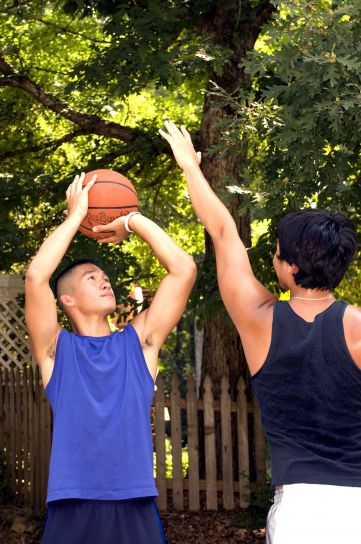 You must break down these components and understand how they both effect your shot in different ways. Then you put them together and you become a better shooter! We must break down every skill in this way if we wish to get to the roots of what we need to fix in our game!
You must break down these components and understand how they both effect your shot in different ways. Then you put them together and you become a better shooter! We must break down every skill in this way if we wish to get to the roots of what we need to fix in our game!
Play Your Position or Don’t
As your skills begin to take shape, so will your identity as a basketball player. Some of your skills may be better than others! You may be better at driving to the basket than shooting or vice versa or you may be known for your ability to get every rebound. We tend to want to do the things that we do well more than the things that we don’t.
As our stronger skills start to emerge, we can determine our basketball position. As the game constantly changes, so do the roles of the position of its players. The traditional basketball player positions are:
1- Point guard
2- Shooting guard
3- Small forward
4- Power forward
5- Center
Each position has a certain role to fulfill on the court, so positions are based on players’ abilities to perform a certain task.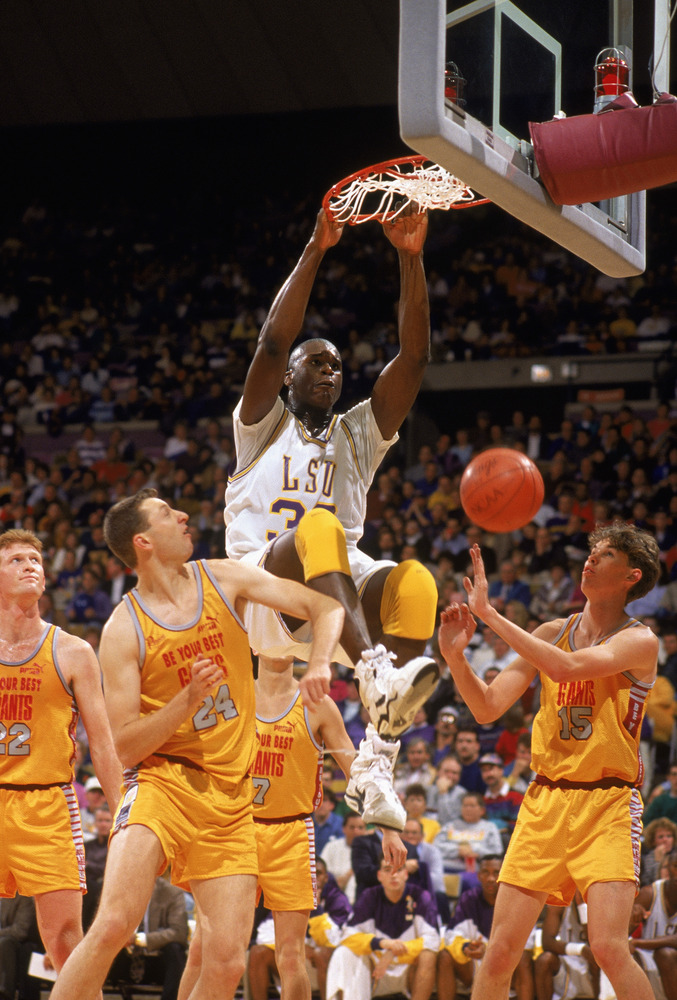
Point guards for example do a lot of dribbling and passing, so to play this position, a player needs to be strong at these two skills. However, in recent years the game has evolved as point guards have begun to develop more shooting and scoring skills.
Positions in basketball can be useful when orchestrating good team play. But, as a basketball player DO NOT LET YOUR POSITION DEFINE YOU AS A PLAYER! This can be dangerous because you want to constantly be evolving and improving your skill. Don’t get caught in the thought that, “I’m just a shooting guard, I don’t need to improve my dribbling or rebounding.”
Basketball Athleticism Basketball does not simply mean we have to jump the highest or run the fastest. Although we certainly want to have a monster vertical leap and to run the court like an Olympic sprinter, basketball athleticism is learning to use your body in ways that maximize your basketball skill!
To develop true athleticism for hoops, we can’t only focus on power and explosion. We must also develop our balance, core strength, acceleration (speeding up), deceleration (slowing down), lateral movement, footwork, conditioning, flexibility etc.
We must also develop our balance, core strength, acceleration (speeding up), deceleration (slowing down), lateral movement, footwork, conditioning, flexibility etc.
Our athleticism is the ingredient that we mix with our skill to enhance our game. As we learn to strengthen our lower and upper body and we get stronger, we can do things like shooting the ball from the three-point line with proper form!
Footwork, Footwork, Footwork
As our balance improves, every one of our basketball skills will improve because we will have more stability as we make any move on the court! We will be better on defense because we will be more balanced in our defensive stance.
The foundation of our balance is our feet. Every move that we make on the basketball court starts with engaging our feet.
The perfect marriage between skill and athleticism is footwork. The more we understand how to control our feet, we can control the rest of your body. We want our feet to move as efficiently as possible. This will allow us to move our body on angles where we will be able to gain advantages on our opponent.
We want our feet to move as efficiently as possible. This will allow us to move our body on angles where we will be able to gain advantages on our opponent.
Often we find that slower, less athletic players with superior footwork are able to beat faster players with inferior footwork. The slow player with better footwork is able to out maneuver the fast player on offense and defense.
Basketball is a dance, learning footwork is like learning the dance steps! As our basketball athleticism improves, we are able to “Dance to the rhythm of the game.”
Basketball IQ: Know the GameUnderstand the game! Learn the rules, Learn the objectives of the game! Learn the history of the game! Learn the language of the game! Learn the form of the game!
There are rules and boundaries that the game is meant to be played within. We must learn these “lines” so that we can find use our individual skills within the context of the game. When you learn the game, certain things become obvious; you don’t want to dribble out of bounds, you want to make shots (in the other team’s basket preferably), you want to pass the ball to the players on your team.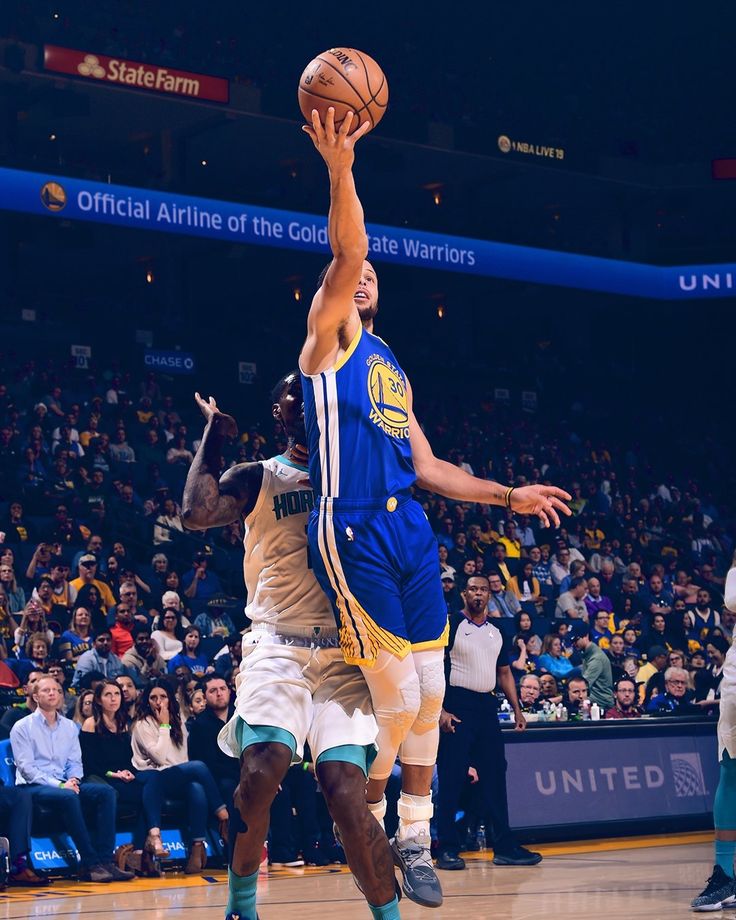
As our knowledge progresses, we begin to learn how the game operates. We learn when certain situations will present themselves in the game. When should we shoot? When should we pass? When is a good time to try to steal the ball on defense? All of these questions are great questions, but they all have more than one correct answer! The more we learn the game the more we understand the different answers to these questions!
Time, Score, and Possession
A big part of our basketball IQ is understanding time, score, and possession. This will answer the questions from above. We should always be aware of how much time is on the clock, the score of the game, and what we want to accomplish on each possession. As we keep these things in mind when we make decisions on the court, we become “smarter” basketball players. As we understand time, score, and possession, we will have a better understanding of when we should use certain skills and when we shouldn’t.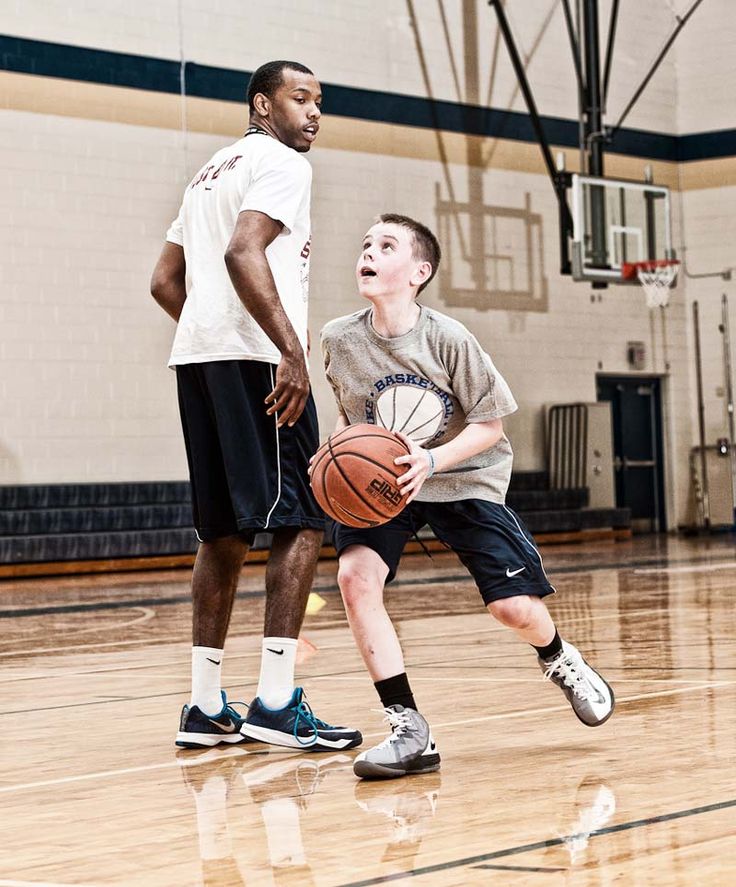
Learn to use your SKILLS AND BASKETBALL IQ within the context of the game. For example, learn the skill learn proper shooting form and techniques. Learn how being in better shape and being a better athlete can give you the strength you need to be a good shooter! Then use your BASKETBALL IQ to look for great shots on the court!
As you begin to elevate your basketball IQ, the speed of the game will seem to slow down. The next play will begin to reveal itself to you and you will develop the basketball instincts to react accordingly.
Courage Over FearThe secret ingredient to being DOMINANT is overcoming your fears that may arise in your basketball experience! Remember that fear can be overcome by finding strength within yourself and making one courageous play. Hustle Hard! Shoot big shots even in the face of defeat. Be a relentless defender even when you are tired. Work when no one is watching!
When we say fear, we are not taking about standing across from your opponent trembling and terrified. Fear can creep in your mind in more subtle ways. We may be afraid to make a mistake, and because of that are hesitant to trust our skills. After missing three shots you may become “gun shy”, and when it’s time to shoot the next shot you may be afraid that if you miss the fourth shot your coach may put you on the bench.
Fear can creep in your mind in more subtle ways. We may be afraid to make a mistake, and because of that are hesitant to trust our skills. After missing three shots you may become “gun shy”, and when it’s time to shoot the next shot you may be afraid that if you miss the fourth shot your coach may put you on the bench.
We must not be discouraged by coaches who communicate poorly. We can’t be discouraged by hostile teammates, crowds or environments. If we allow these things to affect our mentality in a negative way, it will be nearly impossible to dominate the game!
Be A-G-G-R-E-S-S-I-V-E
Be proactive on the court! When you have decided to make a move, make it bold and aggressive. After all we are looking to leave our impact on the game. As we shoot, defend, attack the basket, rebound, etc., we have to do these things as though we intend to dominate the game with our play.
Play as though you belong. Own your physical space. Use your athleticism to carve out real estate on the court and aggressively protect that space.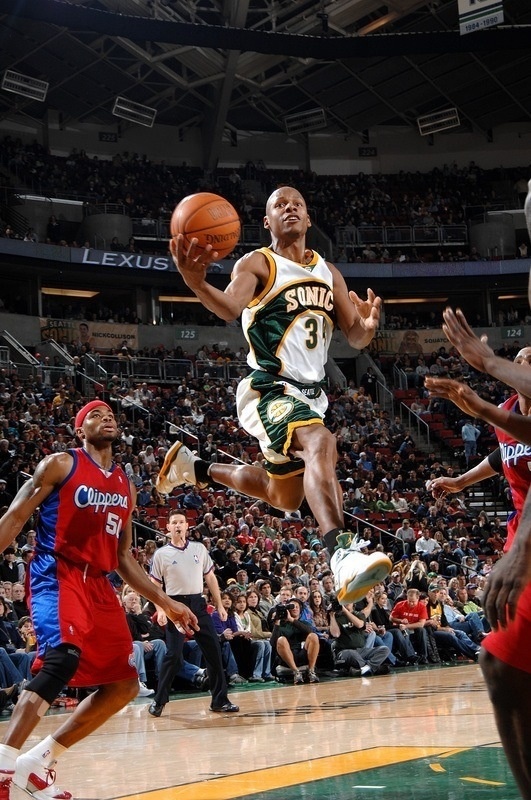 If we are dribbling and attacking the basket, we have to protect the ball aggressively with our body. You have to attack the basket boldly with the mentality that you won’t be stopped!
If we are dribbling and attacking the basket, we have to protect the ball aggressively with our body. You have to attack the basket boldly with the mentality that you won’t be stopped!
If you are on defense, defend aggressively! Remember it’s your job to prevent the offense from scoring. You have to defend in a way that you can dominate the offensive player. Highly skilled and athletic players can do this without fouling.
Dominate The GameIn conclusion, to become the most dominant version of yourself as a basketball player we must remember the four keys:
- Develop your basketball skill
- Develop your basketball athleticism
- Develop your basketball IQ
- Play with courage over fear
CoachUp is the safest and easiest way to find a coach for personalized training. With our 100% money-back guarantee and vetted coaches, anyone can achieve their full athletic potential. Find your perfect coach today and become the athlete you want to be!
How useful was this post?
Click on a star to rate it!
Average rating 4.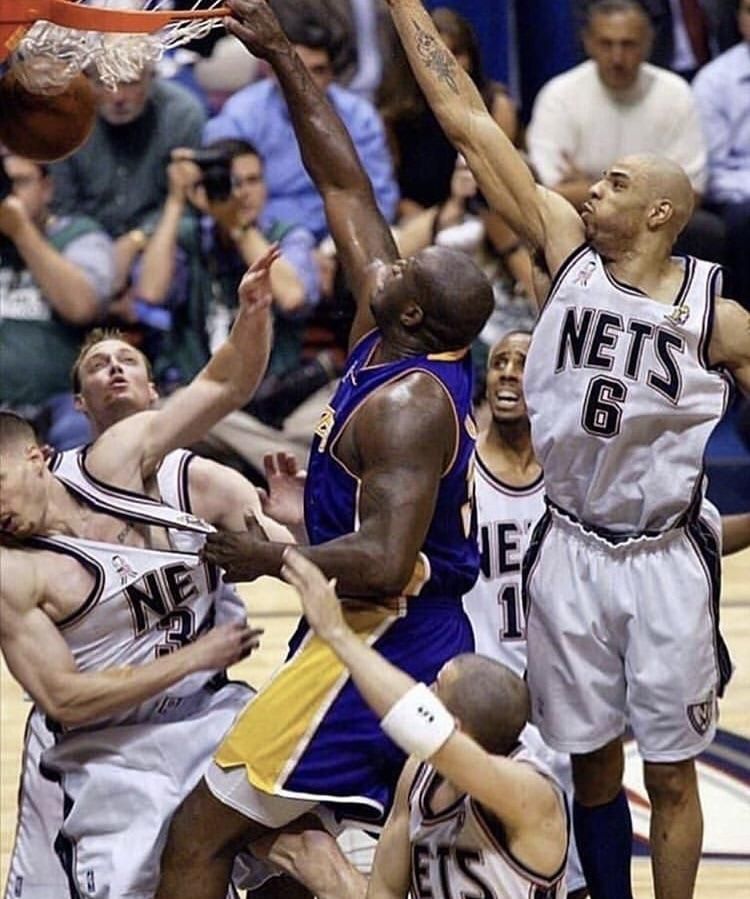 7 / 5. Vote count: 7
7 / 5. Vote count: 7
No votes so far! Be the first to rate this post.
How to Dominate as a Center in Basketball (Tips and Tricks)
The center, who is often referred to as the “five,” is one of the most important basketball positions on the team.
A dominant center can completely change the identity of a team’s offense and defense.
Often the player deemed "the center" is the tallest player on the team, and they usually spend a lot of time around the key on the defensive end of the floor.
Offensively, most of the center’s points will come right around the basket, although it's becoming more common for them to step outside and hit midrange and three-point shots.
5 Traits of a Dominant CenterMany youth players watch the slam dunks of Shaquille O’Neal or the blocked shots of Dwight Howard and want to mimic the play of famous big men...
But few actually have the characteristics necessary to be a great center.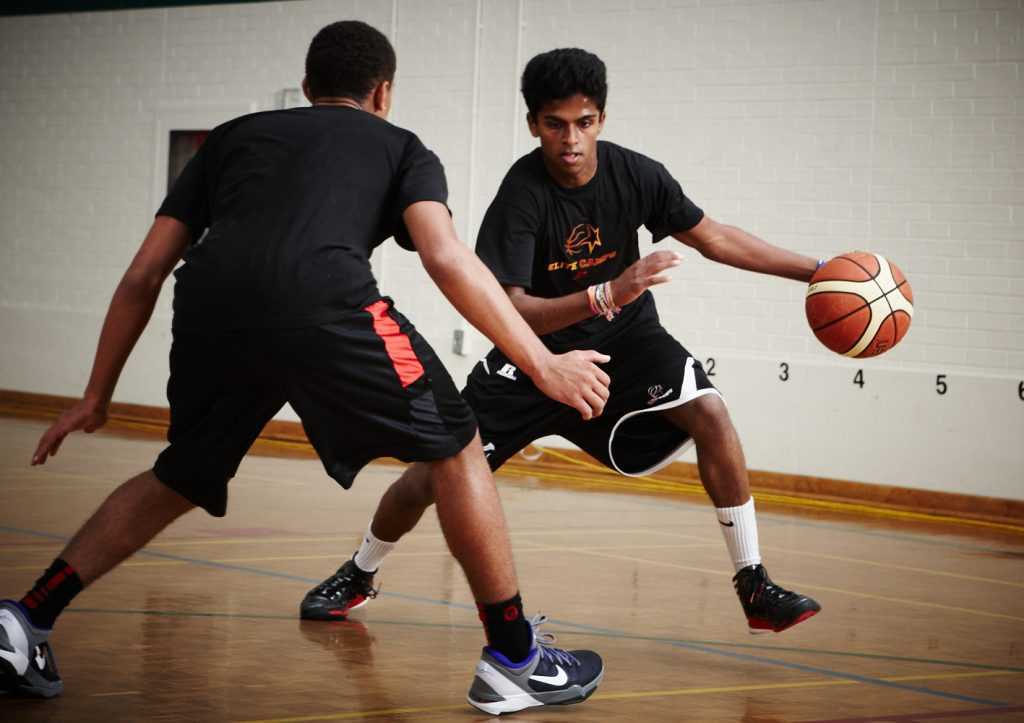
So, what traits does the “five” man need to dominate?
1. HeightEven though we believe positionless basketball can be a great offensive concept and that multiple players should be able to play multiple positions on the court...
The saying “size matters” still exists for a reason.
The center is typically the tallest player on the team, and therefore is typically responsible for getting high percentage layups and post finishes on the offensive end and guarding the other team’s tallest player on the defensive end.
This isn’t to say a smaller center can’t be effective... but it’s much more difficult.
2. StrengthThe team's center also usually has elite strength to compliment that height.
A player who is expected to battle for every rebound, score regularly in the post, and guard the biggest player on the other team will have to be strong in order to be successful.
3. PhysicalityA lot of teams have players that are tall or strong, but it is far more rare for a player to combine those physical attributes with the willingness to use them.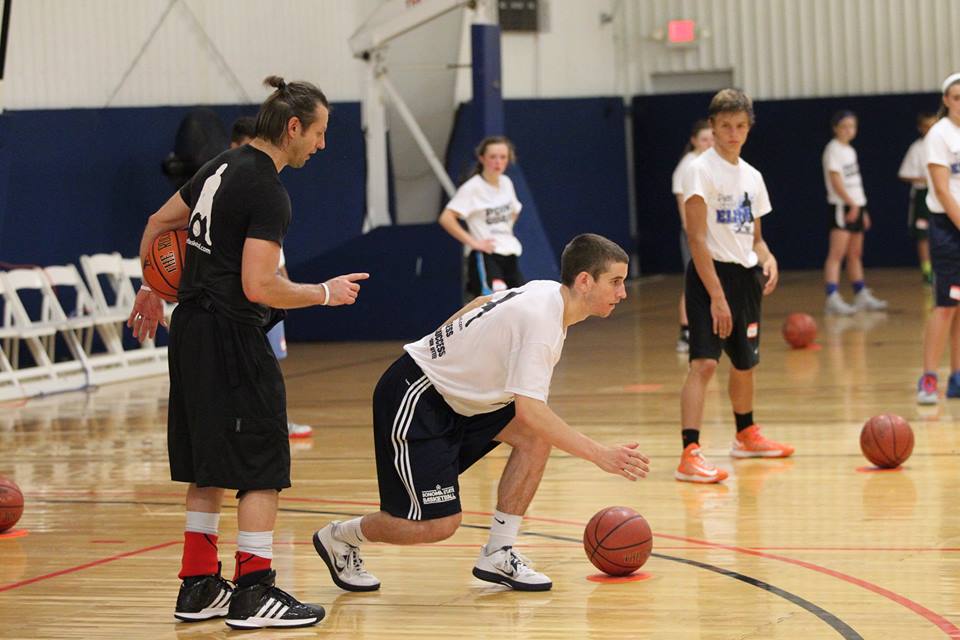
A great center needs to provide an inside presence on both ends of the court, and size alone is not enough to create that presence.
They must also be willing to play physical with the biggest and strongest players on the other team on every trip down the court.
4. MobilityThe tallest player on the team is never going to be the quickest, but a dominant center does still need to be an athletic player who can run the floor and contribute on every possession.
Mobility is a trait that often separates a good center from a great one, primarily because it is so rare among players who are naturally so much larger physically than other players on the court.
Any coach would be glad to have a player who is tall, strong, and willing to play physical...
But if that player is also athletic enough to create shots for himself on the offensive end and block shots on the defensive end, then he will be a truly dominant center.
5.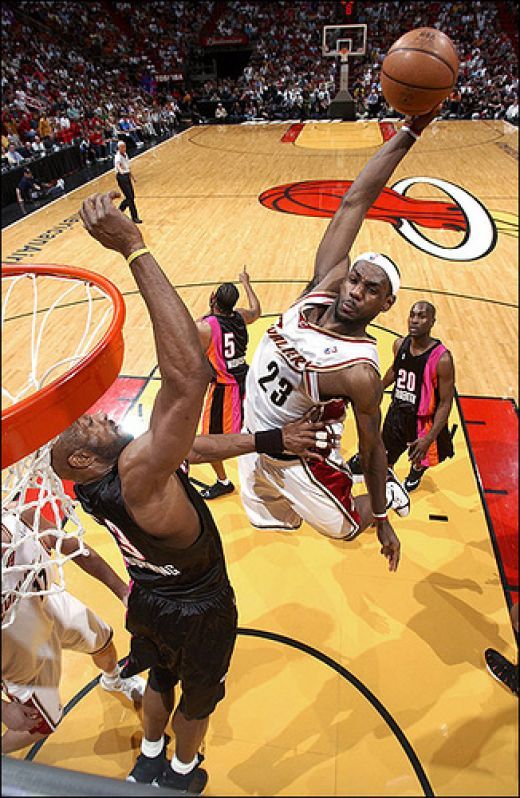 Conditioning
ConditioningDominant centers are a nightmare for opposing coaches, and one way they typically try to minimize that player’s impact is by creating tempo offensively and forcing him to run the floor.
Most centers are not built for that type of game, but a dominant one will also be in good enough shape to play a lot of minutes.
After all, even if you are the best player on the court, your impact is not nearly as high as it could be if you are only able to play half of the game.
A center who is in great physical shape will also be in great shape to become a dominant player.
The Roles and Responsibilities of a CenterA player with size, strength, and athleticism has the potential to become a great center...
But how should he be putting those characteristics to use?
a. Offensive and Defensive ReboundingIf you have a player with the size and physicality to be a true center, he needs to be the best rebounder on both ends of the court.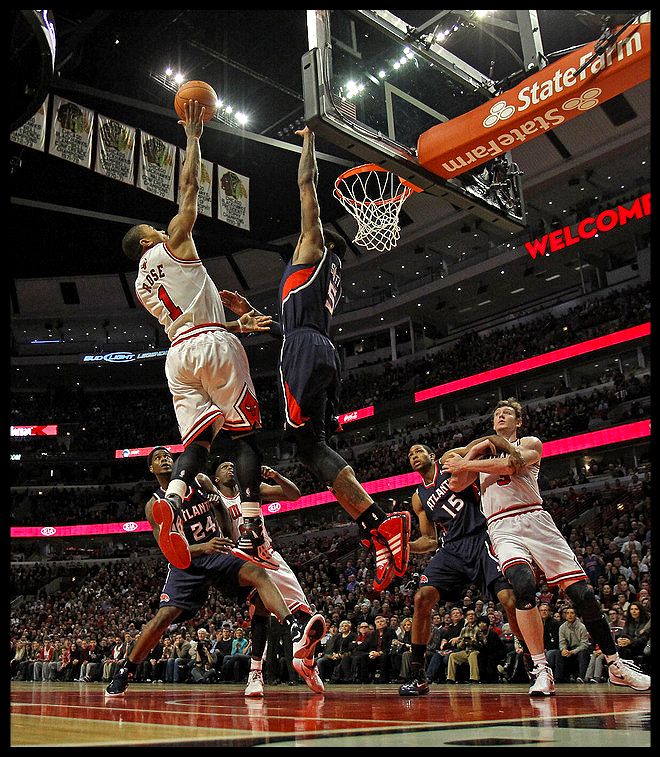
It does not take a basketball genius to realize that the tallest player is the closest to the rim, and therefore the closest to a lot of rebounding opportunities.
A center who controls the glass can be the most valuable member of a basketball team.
More rebounds equals more shots, and more shots equals more points.
So a dominant center who attacks the glass on both ends can completely dictate the game.
b. Inside ScoringAs the biggest player on the court, the center needs to provide a presence in the lane for the offense.
This means he must be able to fight for post position, and then be able to execute a variety of different moves to score on the block.
Depending on the level of play, it can be common for centers to be thrust into their role simply because of size, but a dominant center needs to be skilled enough to make efficient moves and finish with touch around the rim.
c. Providing a Defensive Help PresenceA great center can completely change your team’s entire defense, primarily because opponents will be much less willing to attack the hoop.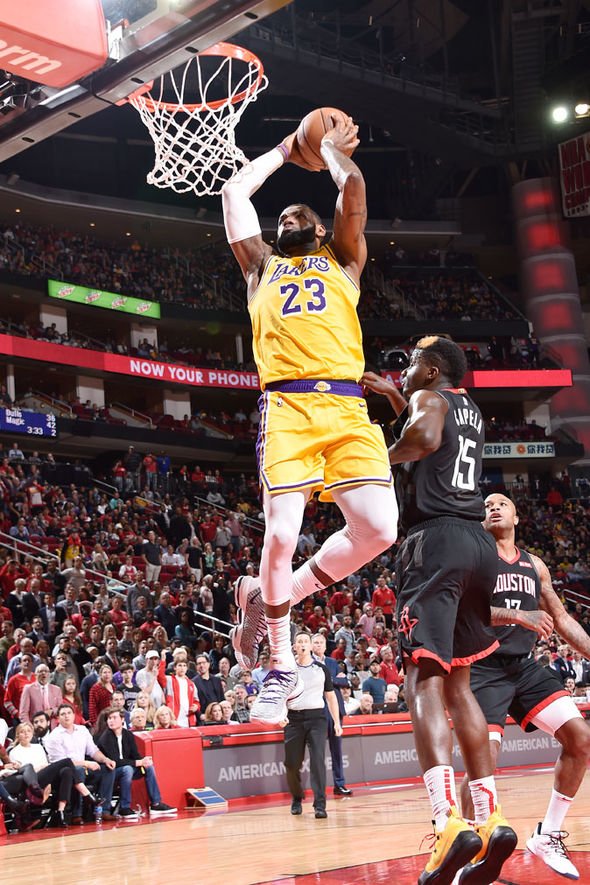
A high level high school center or above may be expected to play above the rim and block shots, but a center at any level can still be a “rim protector” if he is able to be a help defender that discourages the offense to drive.
This is where the height, strength, and physicality mentioned above become necessities for a dominant center, as a smaller player simply does not provide that physical presence.
d. Guarding the Other Team’s Biggest PlayerNaturally, the biggest players typically match up with one another, meaning your center has to be able to guard the biggest player on the other team.
Again, height, strength, and physicality of course play a factor in this responsibility.
Players of any size can get rebounds or score in the post occasionally, but not everyone can physically take on the challenge of defending a center.
If your center has the mobility and conditioning mentioned above as well, then he will have the advantage in this matchup.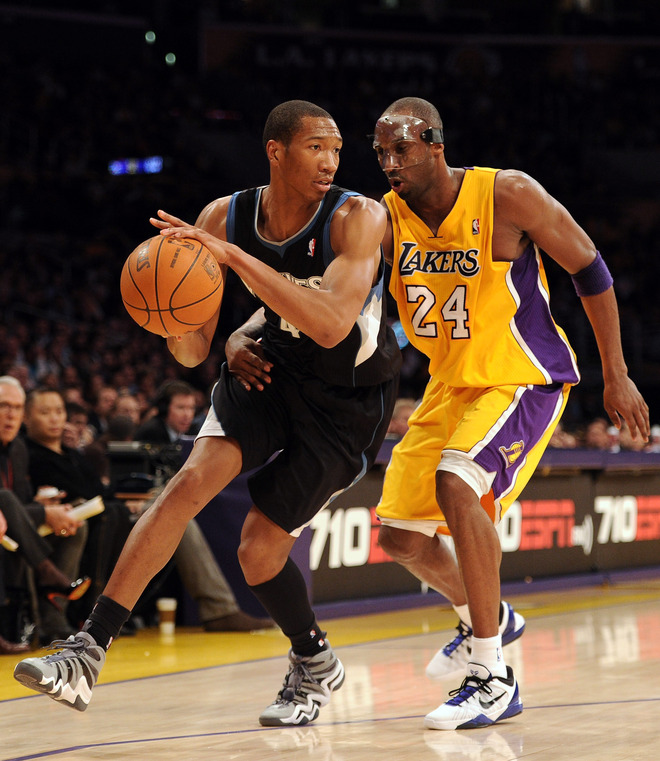
e. Distributing When the Defense CollapsesIf a player is a truly dominant center who is capable of scoring in a variety of ways, then he probably will not be guarded by only one player very often.
Some teams may elect to send double teams or traps to force the center to get rid of the ball, and when that happens, he must be able to distribute to open teammates.
A dominant center scores in the lane often enough to draw additional defenders, and then takes advantage by dumping passes off to the other post player, hitting an open cutter, or kicking out for an open 3-point shot.
5 Tips for a CenterNow that we’ve covered what characteristics can make for a great center and what role the center should be playing on the court, how can a player build himself into a great big man?
1. Develop a Variety of Post MovesAt some point, most coaches have seen a physically imposing center who provides a presence, but his only chance to score is an easy drop step layup or open putback at the rim.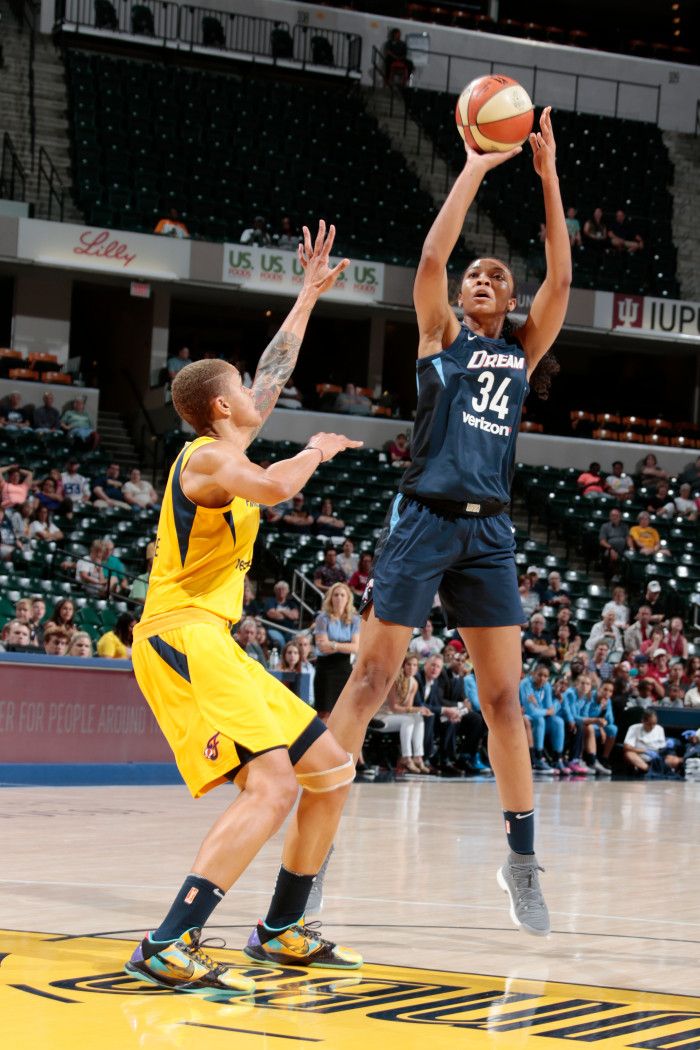
However, a great center needs to have a number of different post moves that they can execute with their back to the basket.
True post players have become fewer and further between in this era of basketball.
In fact, most teams don’t play with a true center at all...
So a big, tall player who probably isn’t as quick as most others or as comfortable on the perimeter needs to have multiple ways to score inside in order to be established as part of an offense.
A dominant center should have a go-to move, a very reliable secondary move, and then also be able to add counters to those moves.
2. Play 1-on-1 Defense in the PostA dominant defensive center is typically a shot blocker.
But simply being tall will not automatically mean that a player will be spiking every opponent’s shot off the backboard.
Blocking shots - and just playing good post defense in general - requires toughness, anticipation, and coordination.
Playing 1-on-1 against an offensive player on the block will help a center develop those skills, and getting a number of repetitions in a row will help build the necessary conditioning as well.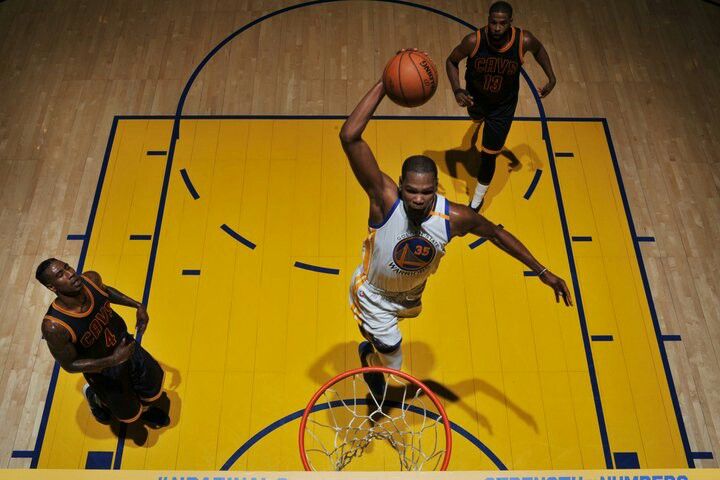
3. Become a Great Free Throw ShooterThe most common way that an opposing coach will try to limit the effectiveness of a dominant center is by forcing him to score at the free throw line instead of giving up open post moves.
It has proven to be incredibly effective in some situations, especially against big men who are far below average free throw shooters.
After all, “Hack-A-Shaq” is still one of the most commonly used phrases in defensive basketball strategy many years after it was implemented.
A great center needs to be able to step up to the free throw line and knock down shots at a high rate so that he can not be taken advantage of by opposing teams.
Free throw shooting becomes even more important in late game situations, and if the center is your best player, you want to be able to leave them in the game during crunch time.
But if they can’t be trusted to make free throws, then you probably won’t want them on the court in those big moments.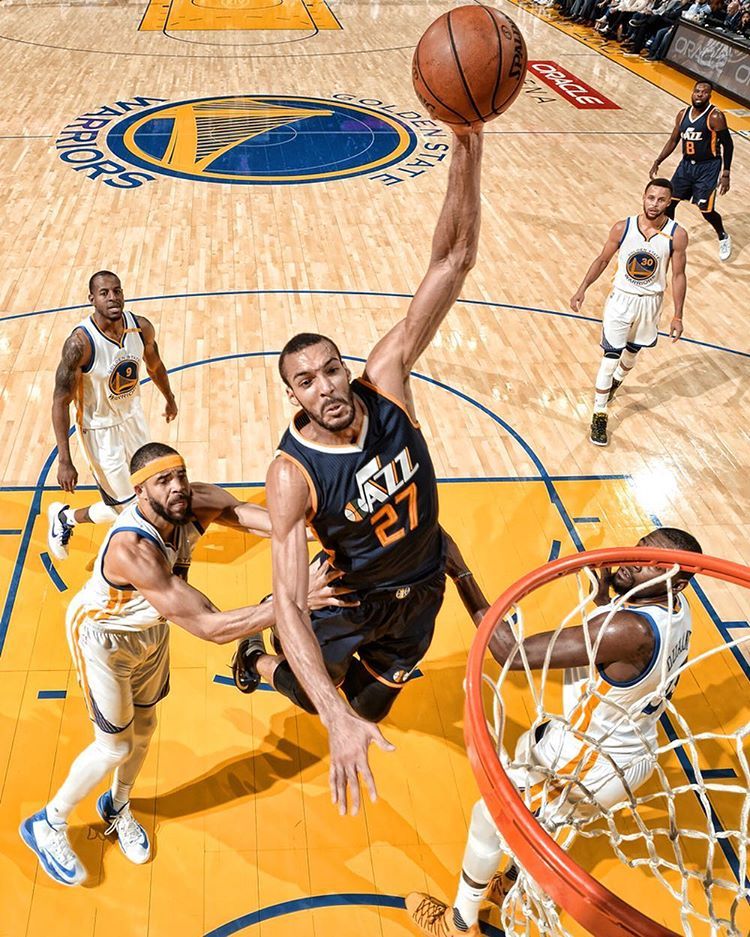
4. Work on Outside ShootingAs mentioned above, the time of true centers has largely come and gone in today’s basketball world.
It has become much more common to see different varieties of “small-ball” or positionless basketball, especially at higher levels.
Therefore, a center will only make himself more valuable if he is also able to at least provide a threat to shoot a jump shot.
Long range shooting isn’t necessary for centers, and it is extremely rare for the center to be considered a knock down shooter.
But even the willingness to shoot from 10-15 feet can add an entirely different dimension that can be very difficult for most opposing centers to defend.
If a center can step out and be a threat from 3-point range, too, then he has the potential to become unstoppable.
5. Get in the Weight RoomWhile shooting and other ball skills can be a great addition to a center’s game, they will never be truly necessary or expected to play the position.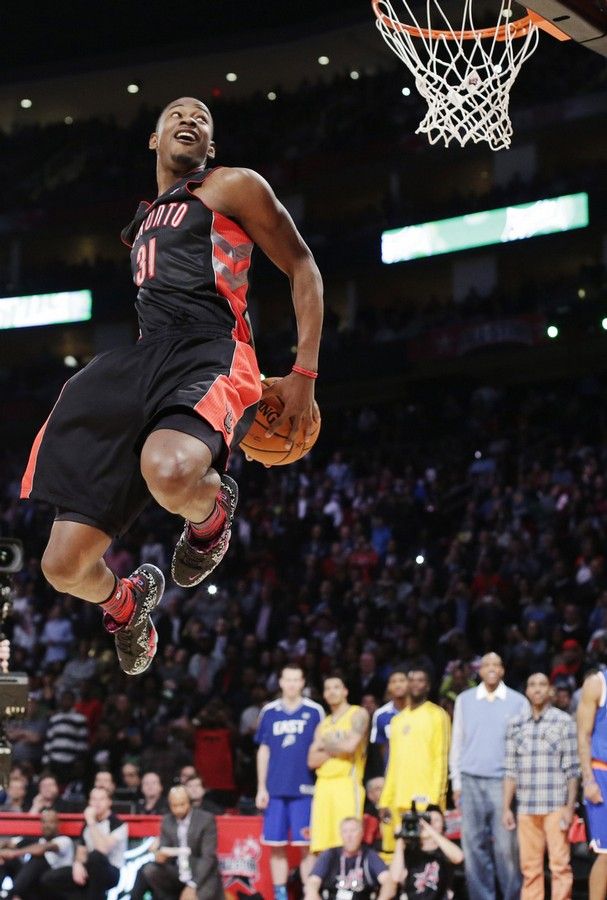
Strength is absolutely essential to the success of a big man who aims to control the paint.
Spend time weight training to get your body to a point where it can physically take on the responsibility and toll of playing center.
ConclusionA center can be a focal point of a team offense and a team defense if they have the size and physicality to provide a real presence on both ends of the court.
However, the center can completely change the game if they also have the skills and athleticism to control the rebounding battle, score in the paint, and block shots.
Though the position has become less and less common in recent years, a truly dominant center who has the ability to impact the game as an offensive threat and also a defensive stopper will make your team a matchup nightmare for opposing coaches.
Three right for a better rebound
Basketballforcoaches
Many basketball players and coaches believe that unless you're blessed with good height or jumping ability, you'll never be a great rebounder.
This is incorrect.
While height and big vertical jump definitely help, a great rebounder is someone who can read the flight of the ball and get into a smart position.
Using effective blocking exercises during your workout can quickly teach even the shortest teams how to dominate the boards.
This will mean fewer points for the opposition, more shots for your team, and the advantage of keeping the aggressiveness on your team's side.
3 backstab exercises
1. Quick rebound ball selection. When a player recovers the ball, he scores one point for his team and must then immediately pass the ball to the throwing partner, who will throw again.
The winner is the team that accumulates 10 points
Goal:
A competitive rebounding exercise that will teach players how to set up a blocking position against their opponent early.
Players will practice reading the flight of the ball and learn how to position themselves to give them the best chance of mastering the bounce.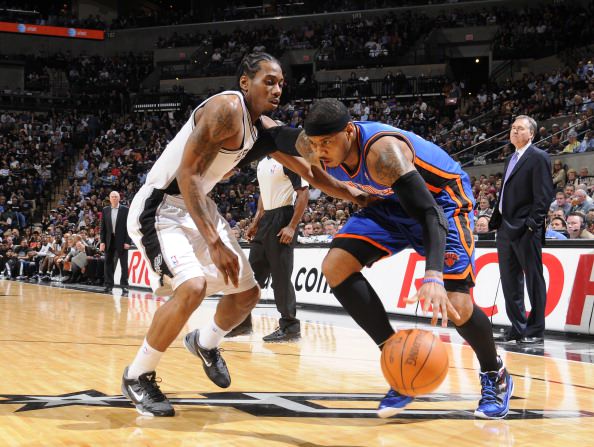
Arrangement.
Five players per basket. Two teams of two players.
LSB thrower. Two teams start inside the 3 second zone
Instructions:
1. The LSB player starts the drill by throwing the basket.
2. As the shot is made, the players inside the box fight for the rebound both on a goal and on a miss.
3. The team that wins the rebound receives one point and must immediately pass the ball back to the thrower.
4. As soon as the player receives the ball, he throws again.
5. The players who have to fight to win the possession fight for the rebound again to accumulate points.
6. When a team reaches 10 points (or rebounds), they are declared the winners.
Options:
Player Shooting Distance - Depending on the age and shooting ability of the players you are coaching, you can change the throwing distance.
For younger players, ask them to shoot below the free throw line.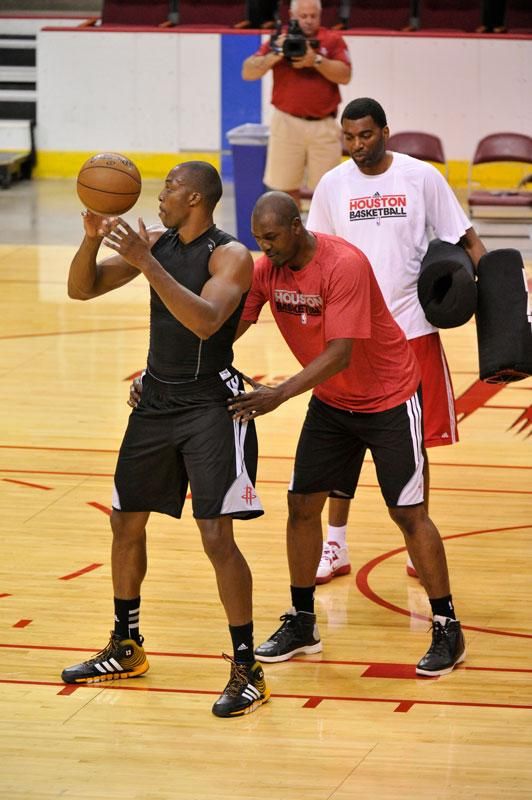
Number of Rebounders - Instead of a 2-on-2 line-up, this drill can also be played with a 3-on-3 or even a 4-on-4.
Coaching Tips:
Keep track of how much exercise your players get. Although this is a power contact drill and you want to let them fight, never let it get to the point where players get injured.
The player who recovers the ball must always count the number of points accumulated by their team.
Talk to your players about the importance of getting a good position against your opponent as soon as possible.
Even if the throw is made, the ball is still alive.
Encourage your players to jump up powerfully and grab the ball with both hands.
2. Unstable selection
How the exercise works:
The first player passes the ball from the middle of the box to one of the partners on the wing. They then have to put their backs on the players on the opposite wing, who will run to grab the rebound.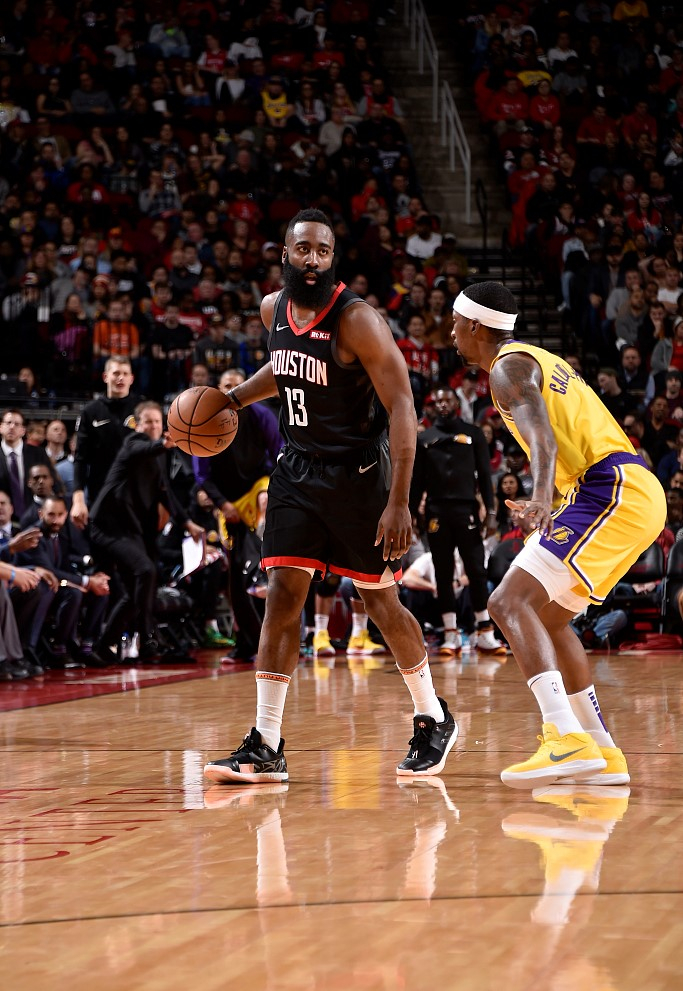
The one who recovers the ball passes to either wing, while the player who did not win the ball must block the player from the opposite wing.
Purpose: This is a high intensity exercise that will teach players how to dash to make contact with their opponent, put their backs, and then challenge for the ball.
Spacing:
. Players are divided into groups on each wing.
. One player starts from the middle of the box with the ball.
Instructions:
1. The player in the middle of the box starts the exercise by passing the ball to the player in front of the line of any wing that will take the throw.
2. Once they have done this, the passer must attempt to block the player on the opposite wing, who will dash to pick up the ball.
3. The person who picks up the ball can choose to pass to any wing. Once they have done so, they join the back line to which they passed the ball.
4. The player who did not pick up the ball must remain in the game and block the player on the opposite wing, who will again try to win the rebound.
The player who did not pick up the ball must remain in the game and block the player on the opposite wing, who will again try to win the rebound.
5. The exercise continues for the amount of time determined by the trainer.
Options:
Individual Scoring - Players can keep track of the number of rebounds they have accumulated.
The winner is the first player to pick up, for example, 7 rebounds.
Corners - Instead of starting on the wings, players may start in the corners of the court.
Tips for Coaches:
It's incredibly important that you encourage players to snatch in order to make early contact with the perimeter snatcher.
• The purpose of the inside rebounder is to keep the perimeter player as far away from the basket as possible. This increases their chances of getting the ball.
• The ball is still in play even if the throw is made.
• On the rebound, the rebounder should go to the rebound with two hands and attempt to secure the ball at the highest point of their jump, and then slowly lower the ball to chin level.
3. Let him bounce!
How the drill works: Four defenders try to keep the ball from being touched by four attackers before it bounces on the floor after a player or coach shoots from the free-throw line.
Purpose: A fun variation on the usual rebounding practice that all players enjoy. Defenders back (block) their opponents using their body to keep a good position and prevent the attacker from going around him and grabbing the ball.
Line-up:
• The 4 attacking players are positioned outside the penalty area.
• 4 defenders start inside the box.
• The coach or player has the ball on the free throw line.
Instructions:
1. The player starts the exercise by shooting from the free-throw line.
2. The defenders must immediately make a dash and touch the body of the attacking players who are trying to catch the bounced ball.
3. Instead of chasing the ball after contact is made, defenders try to keep the opponent on their back and let the ball touch the floor and bounce.
4. If the defense was successful, then the exercise is repeated with a throw from the penalty area. If the attacking team wins the rebound, the ball is in play and they try to put it in the basket.
Variations:
This drill can be played with any number of players, although I recommend either 2v2, 3v3, or 4v4 for best results.
Coaching tips:
• Defenders should keep attackers on their backs for as long as possible and attacking players should chase the ball until they touch it. If the ball bounces more than once, even better for defense.
• Defenders must find the offensive player and make contact before they can find the ball with their own eyes. Use your forearm to make contact and then turn around to block the attacker.
• The defense must be tight with arms wide apart so that attacking players cannot easily get past them.
• Beware of offensive players pushing the defender in the back. Let the players be physically tough, but don't let it get out of hand.
V. Melnichuk transfer 06.01. 2019
0003
Dominance of SShOR "CSKA" and Khanin's achievements / Russian Basketball Federation
The second semi-final round of the All-Russian competition among boys born in 2009 has ended today.
35 participants played in 6 groups of 5-6 teams. To reach the Final, it was necessary to take one of the first two places. The six teams finishing third will compete for the 4 remaining tickets to the Final Round in Semi-final 3.
Moscow-1
First place School №49 "Trinta" them. Yu.Ya. Ravinsky was beyond doubt. Muscovites won more than 20 points in all 5 meetings. Curiously, all the players in the Trinta roster averaged less than 10 points per game. And the best was defender Efim Tarasenko (9.2).
The fight for the second ticket to the Final turned out to be much more interesting.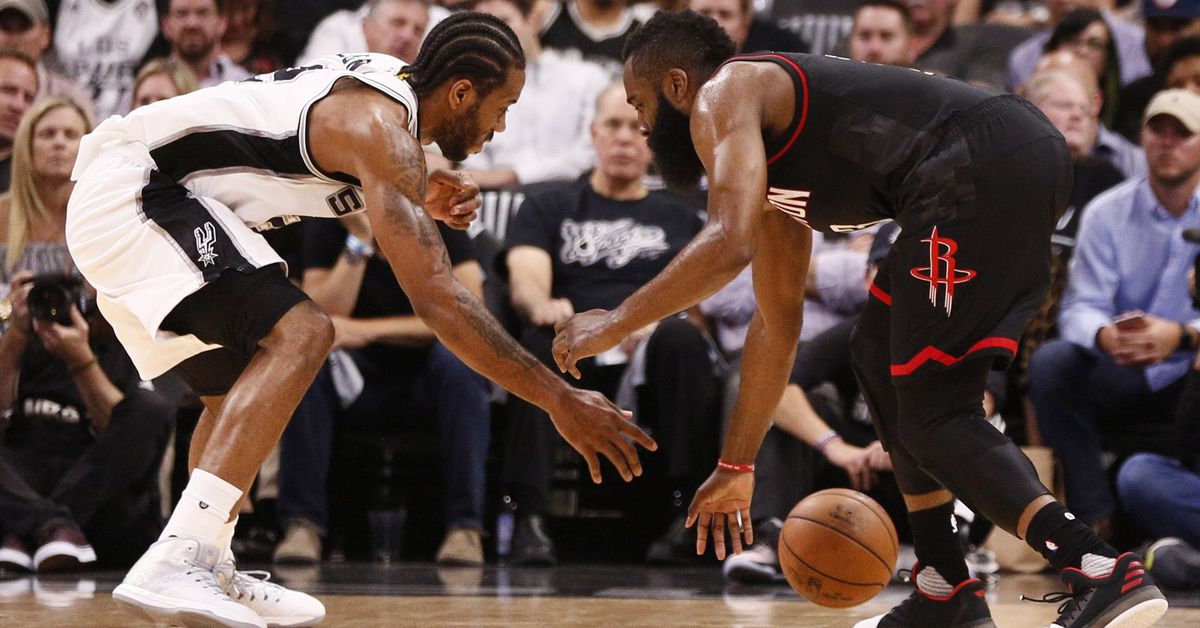 SC "Victoria" in the 3rd round lost to "Trinta" 30:51, but in the next game it achieved a key victory - over school №1 of the Admiralteisky district (40:32). Moreover, the team from Mozhga did not lose a single quarter. The Petersburgers, who won the first 3 matches, had a chance for a place in the Final round, but on the last day they also lost to Trinta (45:70). However, "Admiralteyskaya" will compete for one of the 4 remaining berths in Semifinal 3. And in the fight, which turned out to be decisive in the fight for third place, she confidently outplayed the Youth Sports School from Kolchugino (50:36).
SC "Victoria" in the 3rd round lost to "Trinta" 30:51, but in the next game it achieved a key victory - over school №1 of the Admiralteisky district (40:32). Moreover, the team from Mozhga did not lose a single quarter. The Petersburgers, who won the first 3 matches, had a chance for a place in the Final round, but on the last day they also lost to Trinta (45:70). However, "Admiralteyskaya" will compete for one of the 4 remaining berths in Semifinal 3. And in the fight, which turned out to be decisive in the fight for third place, she confidently outplayed the Youth Sports School from Kolchugino (50:36).
1. School No. 49 "TRINTA" them. Yu.Ya. RAVINSKY, Moscow (5 wins - 0 losses). 2. SC "VICTORIA", Mozhga (4-1). 3. School No. 1 of the Admiralteisky district, St. Petersburg (3-2). 4. Youth Sports School, Kolchugino (2-3). 5. Youth Sports School "Spartak", Lesozavodsk / Team of Primorsky Krai (1-4). 6. SSHOR "Krasnoyarsk", Krasnoyarsk (0-5).
Mytishchi
Two participants had a noticeable advantage over the other teams. At the same time, the SShOR "Gloria" them. Yu.I. Biryukova scored 4 wins with a difference of "+26" or more, but in the match for the first place (it took place in the 3rd round) she lost heavily to BC "Kaliy-Basket" (43:57). As a result, the young men from Berezniki did not suffer a single defeat, but they won two difficult victories - with an advantage of 6 and 5 points.
At the same time, the SShOR "Gloria" them. Yu.I. Biryukova scored 4 wins with a difference of "+26" or more, but in the match for the first place (it took place in the 3rd round) she lost heavily to BC "Kaliy-Basket" (43:57). As a result, the young men from Berezniki did not suffer a single defeat, but they won two difficult victories - with an advantage of 6 and 5 points.
In the struggle for a place in the third Semifinal round, the penultimate round match between the Basketball School and Youth Sports School No. 4 from Irkutsk became a key one. The hosts won it more than confidently (49:31), gaining an advantage over their competitors in the event of a possible rotation of three teams. Siberians had to beat BC "Kaliy-Basket" on the final day. A little over two minutes before the end, they were leading "+7", but they missed the victory - in the end, Daniil Fedoseev equalized the rivals with a well-aimed three-pointer. And in overtime, the boys from Berezniki turned out to be stronger - 53:48.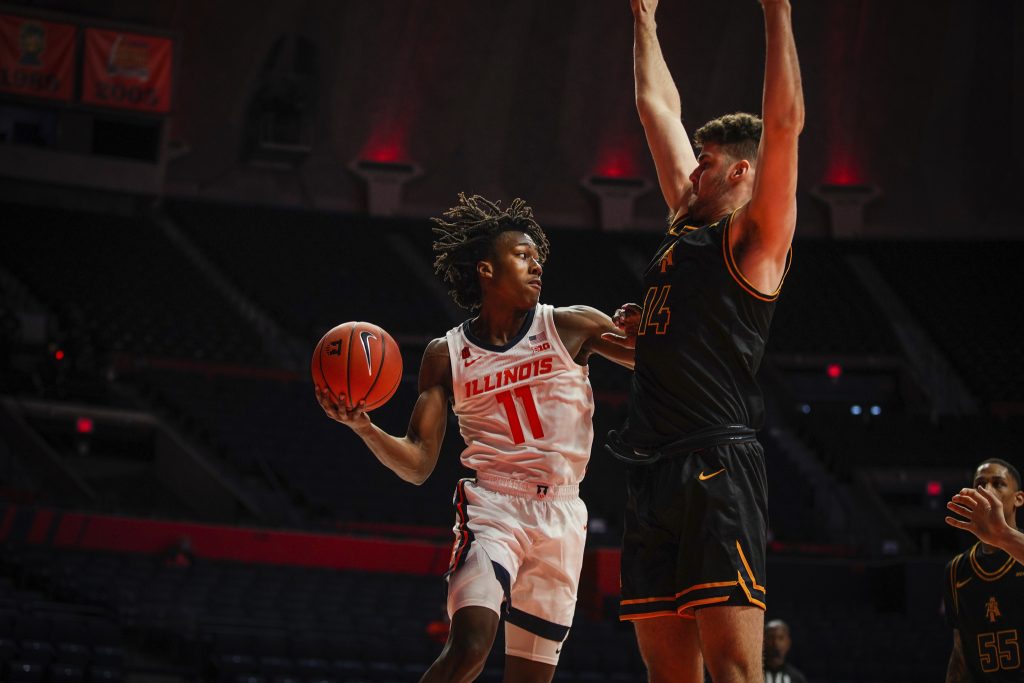 The SShOR in basketball, having secured the third place, could also compete for a direct hit in the Final, but in the last match it unconditionally lost to Gloria - 40:67.
The SShOR in basketball, having secured the third place, could also compete for a direct hit in the Final, but in the last match it unconditionally lost to Gloria - 40:67.
1. BC "KALIY-BASKET", Berezniki (5-0). 2. School "GLORIA" them. Yu.I. BIRYUKOVA, Moscow (4-1). 3. SShOR in basketball, Mytishchi (2-3, personal meeting "+18"). 4. Youth School No. 4, Irkutsk (2-3, "-18"). 5. Secondary School No. 1 of the Kalininsky District, St. Petersburg (1-4, L / V "+5"). 6. SShOR, Vsevolozhsk (1-4, "-5").
Chelyabinsk
School No. 56 and School No. 2 Krasnye Krylia became participants in the Final Round ahead of schedule. Each of them achieved victories in the first 4 matches, and with the same total points difference - "+122". And in the face-to-face meeting, everything was decided ... only in overtime! At the end of regular time, Kirill Khanin, the leader of Muscovites' attacks, equalized the score - 47:47. He twice brought forward SSHOR No.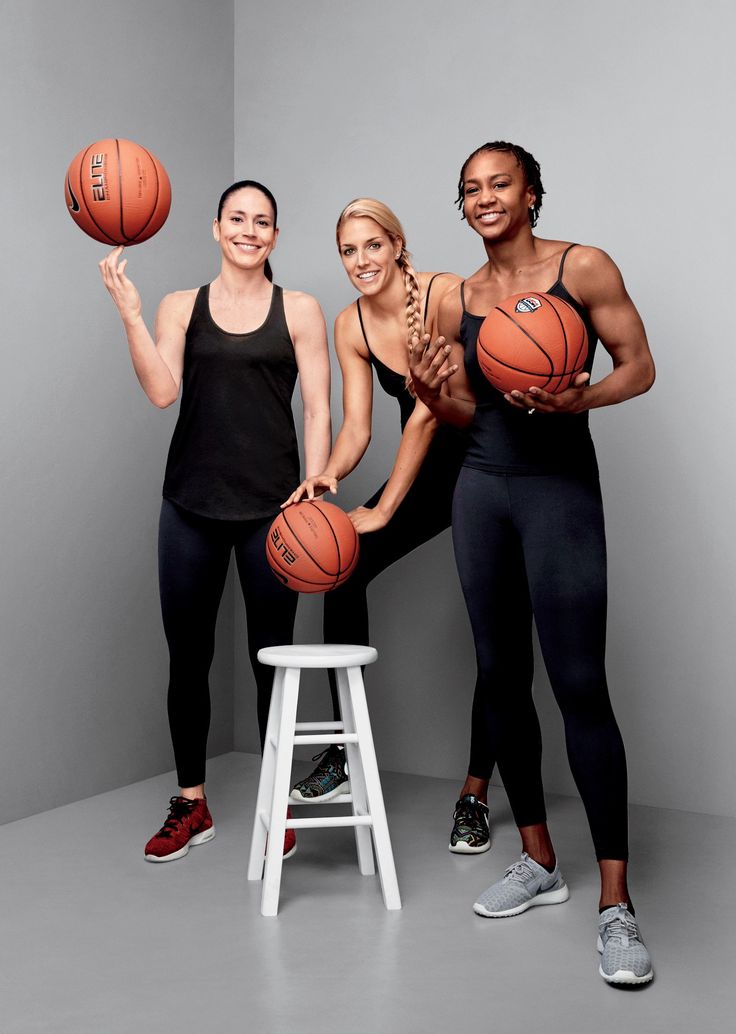 56 in the extra, but both times Togliatti equalized the score. The denouement came at the end of the fifth period: Pavel Filippov made an interception and organized a quick break of the Muscovites, Khanin was not greedy, giving a timely pass to Mikhail Klimenko, who brought the victory to the capital's team 6 seconds before the final siren - 53:51!
56 in the extra, but both times Togliatti equalized the score. The denouement came at the end of the fifth period: Pavel Filippov made an interception and organized a quick break of the Muscovites, Khanin was not greedy, giving a timely pass to Mikhail Klimenko, who brought the victory to the capital's team 6 seconds before the final siren - 53:51!
By the way, it was Khanin who became the author of the main record of Semifinal 2. Recall that in the youngest age category the duration of the quarter is only 8 minutes, and in the first three teams play in fives, which completely change in the middle of the periods. Thus, players can spend a maximum of just over 20 minutes per game on the court.
Khanin played less than 19 and a half minutes in the match of the starting round against SShOR in basketball "AltaiBasket". And this time was enough for him to score 41 (!) points. At the same time, in the final three minutes with a little, he scored the last 15 points of the SShOR No.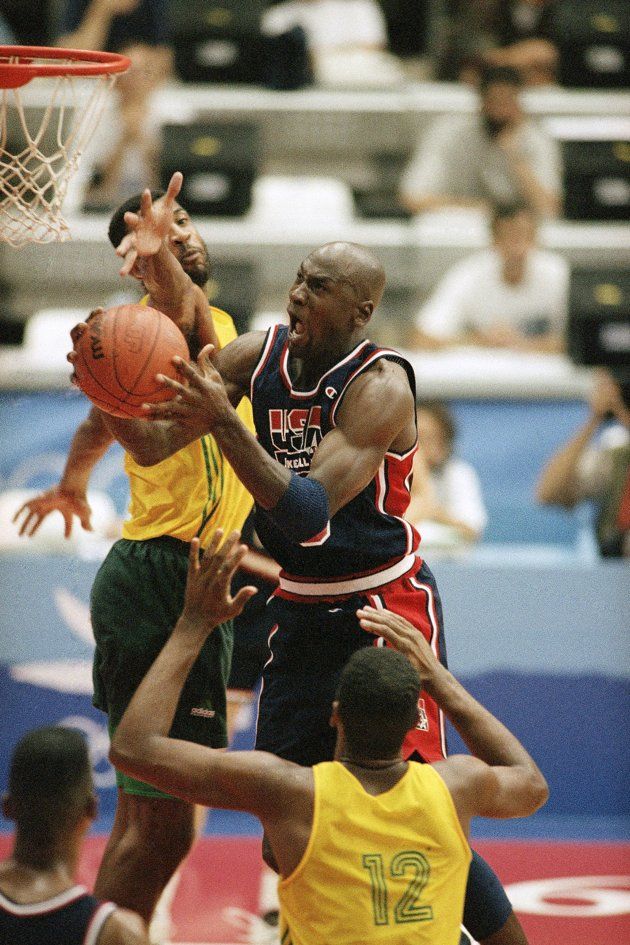 56, which defeated the opponent with a score of 87:40. As a result, Khanin showed amazing accuracy, having realized 18 two-point shots out of 23. And, in addition to the sniper record, he set the highest achievement of Semifinal 2 in terms of utility factor (44 points) in that meeting. True, as a result, gaining at least 17 points in each game, he did not become the best sniper of the round. For this, he did not have enough ... just one point: Khanin lost to Kirill Grigory from the Lyubertsy basketball school "Spartak" (23.2 vs. 23.3).
56, which defeated the opponent with a score of 87:40. As a result, Khanin showed amazing accuracy, having realized 18 two-point shots out of 23. And, in addition to the sniper record, he set the highest achievement of Semifinal 2 in terms of utility factor (44 points) in that meeting. True, as a result, gaining at least 17 points in each game, he did not become the best sniper of the round. For this, he did not have enough ... just one point: Khanin lost to Kirill Grigory from the Lyubertsy basketball school "Spartak" (23.2 vs. 23.3).
Meanwhile, the fate of the third place was decided in the meeting between the two host teams, which took place in the starting round. The Pioneer BS turned out to be stronger than the Olimp SS - 41:36.
1. School №56, Moscow (5-0). 2. School No. 2 "RED WINGS", Togliatti (4-1). 3. BS "Pioneer", Chelyabinsk (3-2). 4. School "Olimp", Chelyabinsk (2-3). 5. School of basketball "AltaiBasket", Barnaul (1-4). 6. School im. ZTR V. N. Promina, Omsk (0-5).
N. Promina, Omsk (0-5).
Pokrovskoe-1
The only group that had 5 members. Despite this, SSHOR CSKA, having defeated opponents in all four matches, achieved the highest point difference in Semifinal 2 - "+156". The junior army team was by far the best team of this round, also outperforming everyone in three main indicators - average performance (80.5 points), rebounds (54.8) and assists (22.0). The second without any problems finished school "Olympian". In the first match, the Permians lost to SShOR CSKA with a double score (34:71), but then they won three victories in a row with a difference of at least “+15”.
The struggle for a ticket to the Semifinal 3 turned out to be incredibly dramatic. It went to Samara School No. 1, which lost all 3 matches before the final day. In order to get ahead of their competitors, the Volga players needed a victory over Spartak basketball school with a +9 difference. And SShOR No. 1 coped with the task, winning 63:53.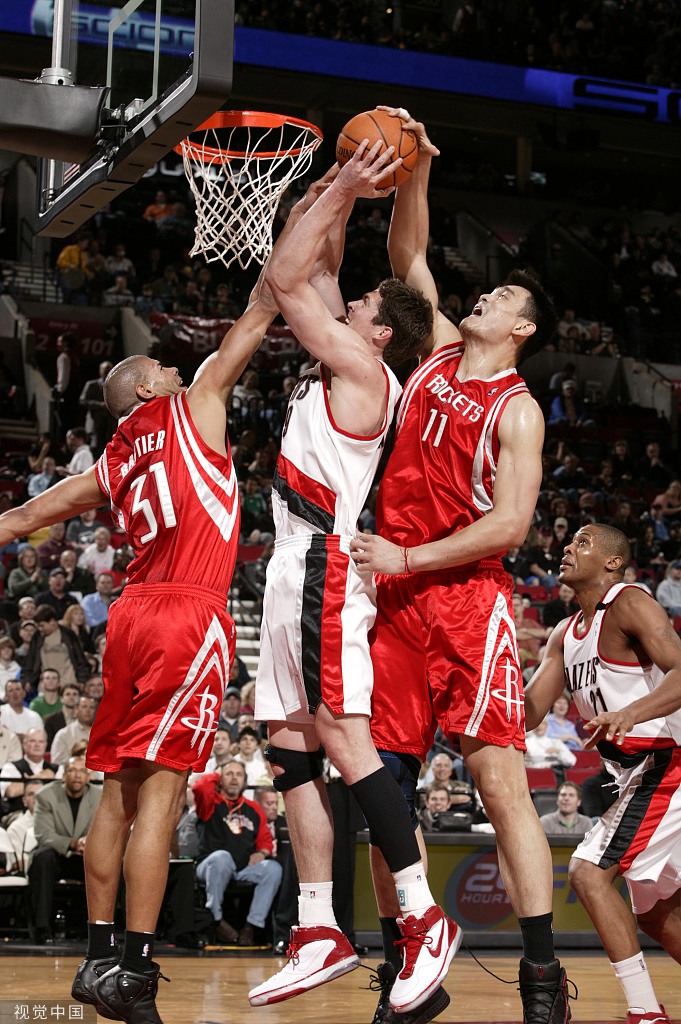 Curiously, before the final quarter she led 20 points, but managed to lose this advantage - only "+6" in the last minute. And still achieved the desired result within ... a couple of seconds! Matvey Gudkov scored in the aisle, and Mikhail Zhilin, having made an interception, was stopped by an unsportsmanlike foul and, having converted both free throws, set the final score.
Curiously, before the final quarter she led 20 points, but managed to lose this advantage - only "+6" in the last minute. And still achieved the desired result within ... a couple of seconds! Matvey Gudkov scored in the aisle, and Mikhail Zhilin, having made an interception, was stopped by an unsportsmanlike foul and, having converted both free throws, set the final score.
By the way, the team from Lyubertsy was able to organize a desperate chase in the fourth quarter thanks to Kirill Grigory. In it, he scored 20 of his 29 points, but this was only enough to become the best sniper in Semi-final 2 - Spartak basketball school finished only fourth in the group.
1. SSHOR "CSKA", Moscow (4-0). 2. School "OLYMPIAN", Perm (3-1). 3. School №1, Samara (1-3, L/V "+2"). 4. Basketball school "Spartak" (1-3, "-1", 1:0). 5. School No. 2 of the Nevsky district, St. Petersburg (1-3, "-1", 0:1).
Moscow-2
A group in which all the main events unfolded on the last day.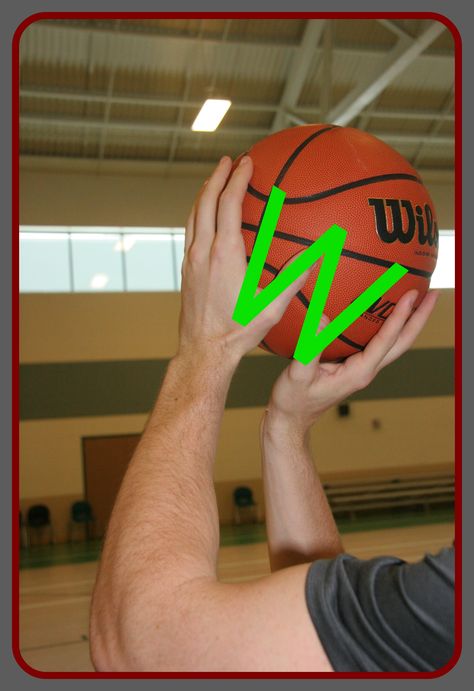 The SShOR of the Vasileostrovsky district advanced to the Final ahead of schedule, having won 4 victories in a row. But it still didn't become the first. School "Yunost" from Stary Oskol, starting with a defeat from the Kirov school No. 1 (36:54), then did not lose even once and, thanks to the success in the final round with the Petersburgers (54:47), outstripped them just by the result of a personal meeting.
The SShOR of the Vasileostrovsky district advanced to the Final ahead of schedule, having won 4 victories in a row. But it still didn't become the first. School "Yunost" from Stary Oskol, starting with a defeat from the Kirov school No. 1 (36:54), then did not lose even once and, thanks to the success in the final round with the Petersburgers (54:47), outstripped them just by the result of a personal meeting.
In the 5th round, the participant of the Semi-final 3 was also determined. School No. 1, which beat the Youth Sports School No. 1 against Arzamas, had a chance to take third place (36:27). Everything depended on the result of the last game. However, UOR No. 4 them. AND I. Gomelsky took over SShOR No. 1 from Khimki (42:30) and got ahead of the Kirov team thanks to the victory in a face-to-face meeting (52:46).
1. School "YUNOST", Stary Oskol (4-1, L/V "+7"). 2. SShOR VASILEOSTROVSKOY DISTRICT, St. Petersburg (4-1, "-7"). 3. UOR No. 4 them. AND I. Gomelsky, Moscow (3-2, L/V "+6").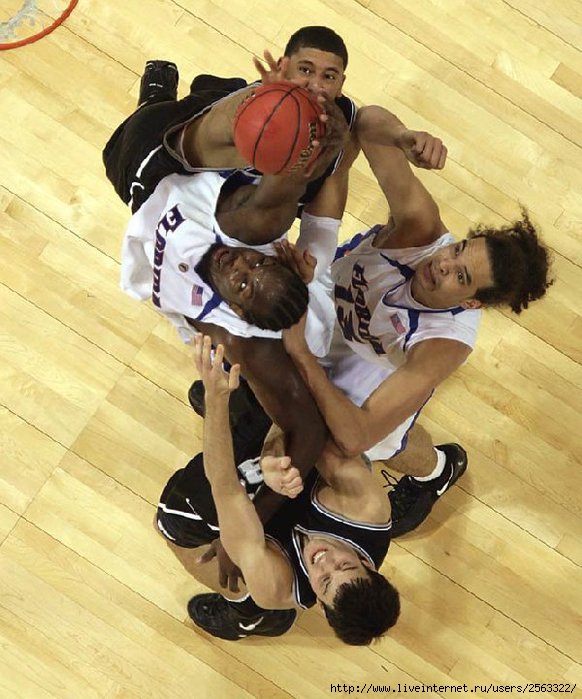 4. School No. 1, Kirov (3-2, "-6"). 5. School №1, Khimki (1-4). 6. Youth School No. 1, Arzamas (0-5).
4. School No. 1, Kirov (3-2, "-6"). 5. School №1, Khimki (1-4). 6. Youth School No. 1, Arzamas (0-5).
Pokrovskoye-2
Both finalists were determined in advance: the Voronezh School No. 9 and the Krasnodar TsPYUB had 4 victories each. Today there was a match between them for the first place, in which the Voronezh team turned out to be stronger - 57:54. Nikolai Sevostyanov scored among them, chalked up 21 points, 12 rebounds and 5 assists.
A little earlier today, the last participant of the third Semi-final round was determined. This right was won by FOK "Meshchersky", which defeated the Youth Sports School from Ramenskoye (62:38).
1. School №9, Voronezh (5-0). 2. TsPYUB, Krasnodar (4-1). 3. FOK "Meshchersky", Nizhny Novgorod (3-2). 4. School No. 23, Volgograd (2-3). 5. Youth School, Ramenskoye (1-4). 6. School "Kupchinsky Olympus", St. Petersburg (0-5).
Thus, 12 finalists of the All-Russian competition among youths 2009 were determinedyear of birth, as well as 6 teams that will play in Semi-final 3 for the remaining 4 tickets to the Final round.